
Transporting art: how Hasenkamp transported the shipyard model of the “Bremen IV” right across the city of the same name
Economics & Logistics
Adieu, Übersee Museum! The shipyard model of the “Bremen IV” is leaving its home port. A job for Hasenkamp – one of the world’s most renowned haulage companies for art – and the Atego.

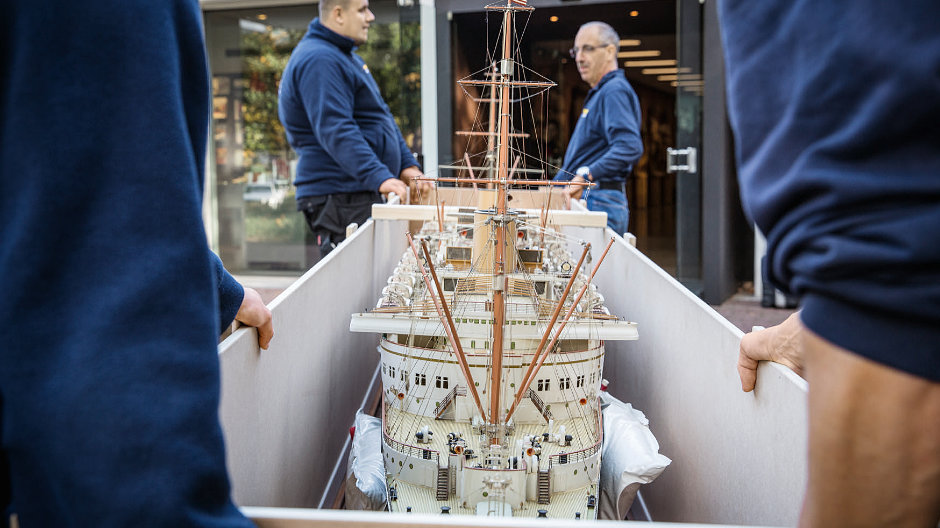
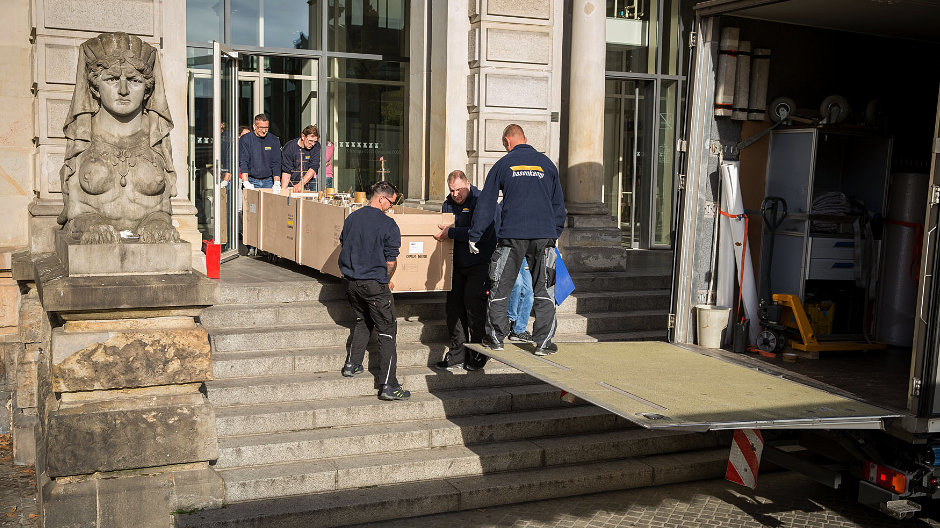
The “Bremen IV” only needed four days for the trip from Bremerhaven to New York. That was back in 1929. Record time. The successful maiden voyage of the steamship was crowned by the blue riband – an award for the fastest ship on a trans-Atlantic route. Today, the shipyard model is doing its best to copy its big sister. In just under four hours the little “Bremen IV” manages to cross the city of the same name from the Übersee Museum (Overseas Museum) to the “Focke” – the state museum for art and cultural history. Record helper: Hasenkamp, a haulage company that specialises in transporting art of any kind.
Darling of the art scene.
From Anselm Kiefer exhibits weighing tons to the complex transportation of whole collections – for example in 2017 from the Louvre in Paris to its counterpart in Abu Dhabi – Hasenkamp is a top-league player. The company also organises removals of entire authorities, EDP systems, laboratories and archives. This cannot be compared with normal transport operations. And it has made Hasenkamp one of the world’s most renowned haulage companies – particularly in the art scene.
Their reputation goes as far as Bremen. There the transport of the “Bremen IV” still presents a small challenge: a lack of knowledge. When Hasenkamp received the order, only the general framework was clear. The shipyard model is almost four metres long and was to be moved from museum A to museum B. “No one could tell us how much the ship weighed, whether it was hollow or solid, or how sensitive the structure was,” says Anton Sindilj. “And no one knew when it was last moved and how.” Sindilj is one of eight art inspectors working for Hasenkamp. His job: prior to transportation he travels to the place where it will all happen in order to fathom out all of the potential hazards so that the object reaches its destination safely. This was also the case for the “Bremen IV”.
The specialist looked at the stairwell in the museum, counted the steps, and measured corners and narrow doors. However whether the ship weighs 50 or several hundred kilos still remained a puzzle. But Sindilj had to act. He planned for six carriers and an Atego. “That is based simply on experience,” he says with a smile. The 47-year old has worked for Hasenkamp for 20 years.
Of immeasurable value.
On the day of reckoning, a group of specialists arrives in Bremen. Arno Büchel is one of them and he arrives together with Steffen Säwe in the Atego. The two have been a team for a year. “We always have two people in the cab,” Büchel tells us. “For insurance reasons. Our truck also has an air conditioning system for the load compartment, 12 bar air suspension and is secured with an alarm. Everything for art.” Arno Büchel also has a wooden crate with him that was built specifically for the protection of the “Bremen IV”. “At Hasenkamp, we have our very own carpenter's workshop,” he continues. “We can build everything there: from simple protective packaging to fire-resistant air conditioned boxes.” Measuring up to individual demands – standard at Hasenkamp.
The other helpers arrive by car. The men have come from Cologne where Hasenkamp's central scheduling office is located. In Germany alone the company has 13 subsidiaries and another 19 in Europe. A further five are located in Asia and the Middle East.
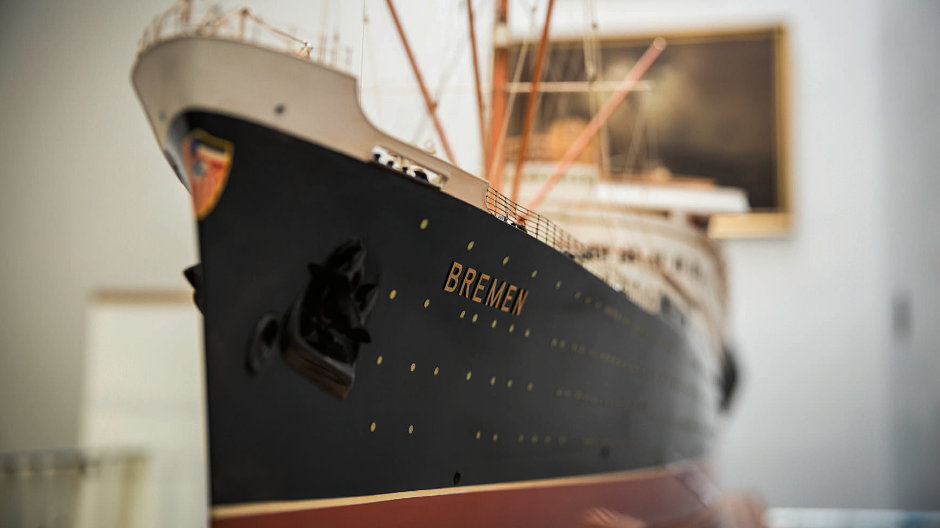
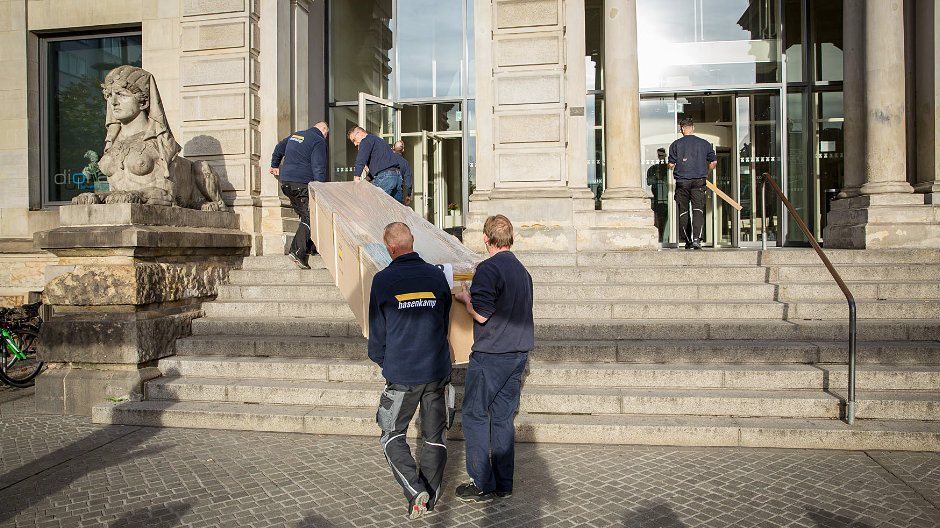
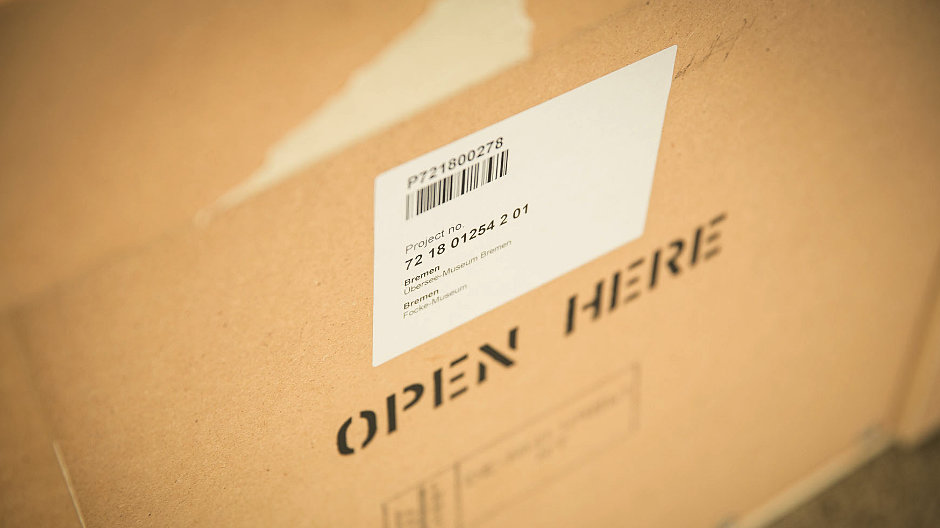
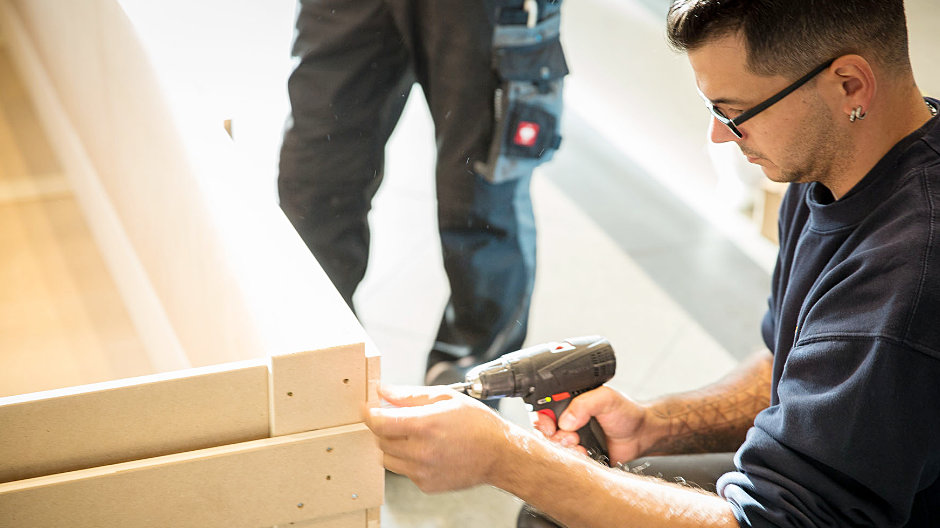
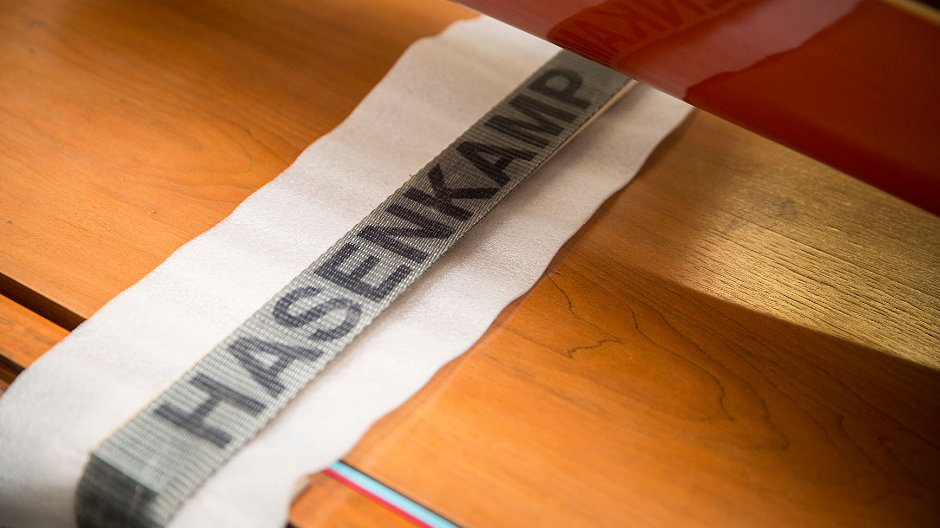
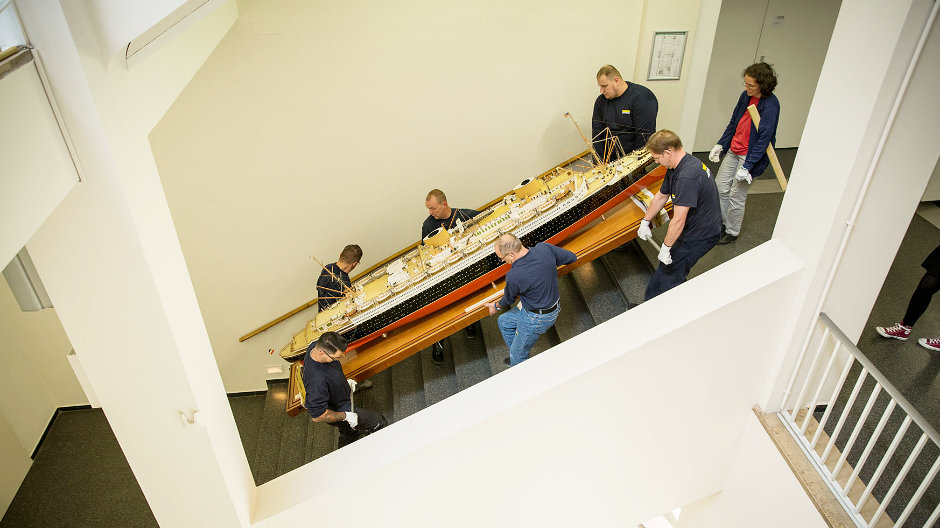
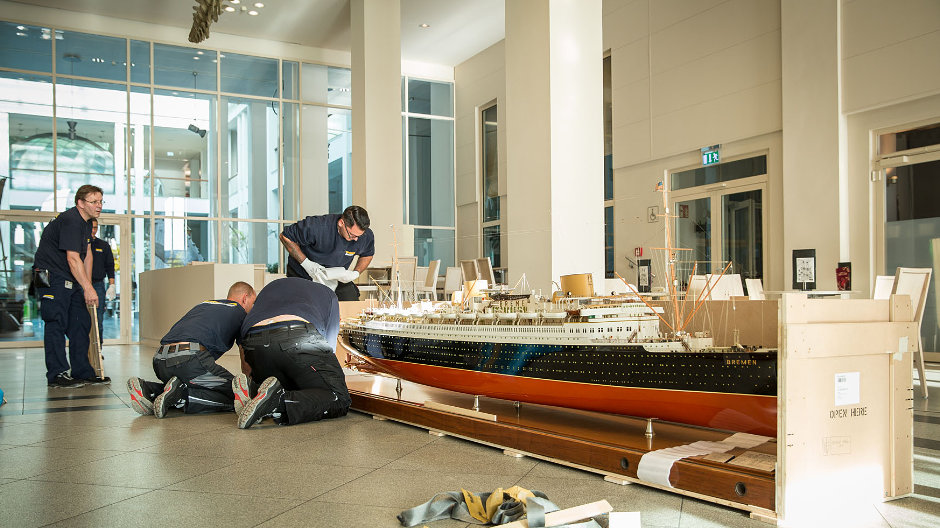
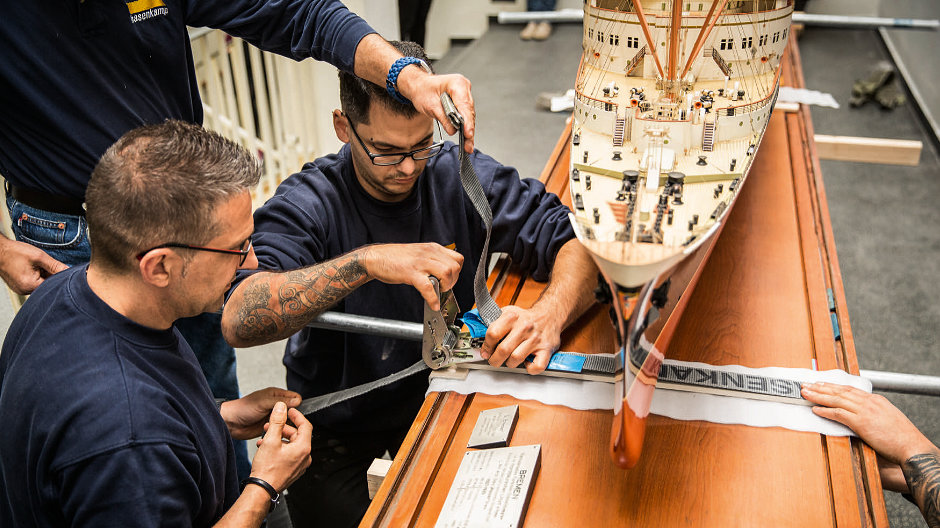
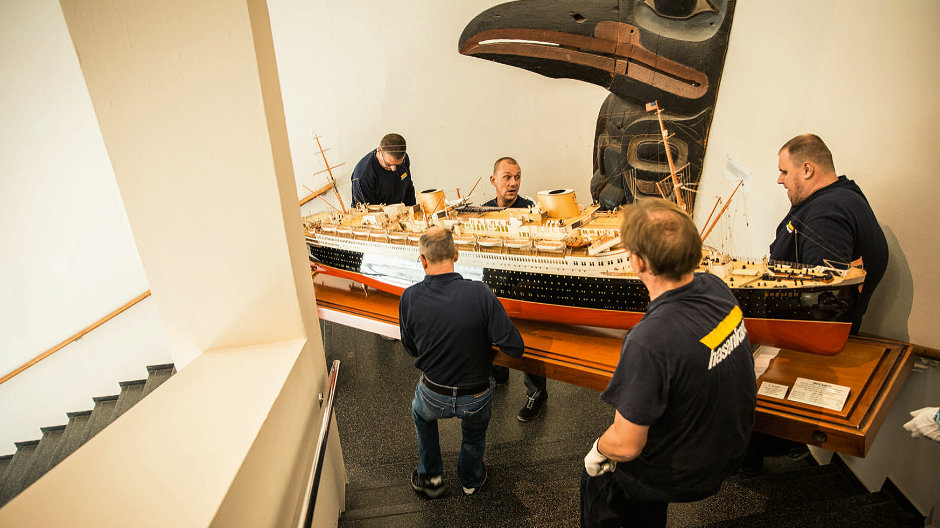
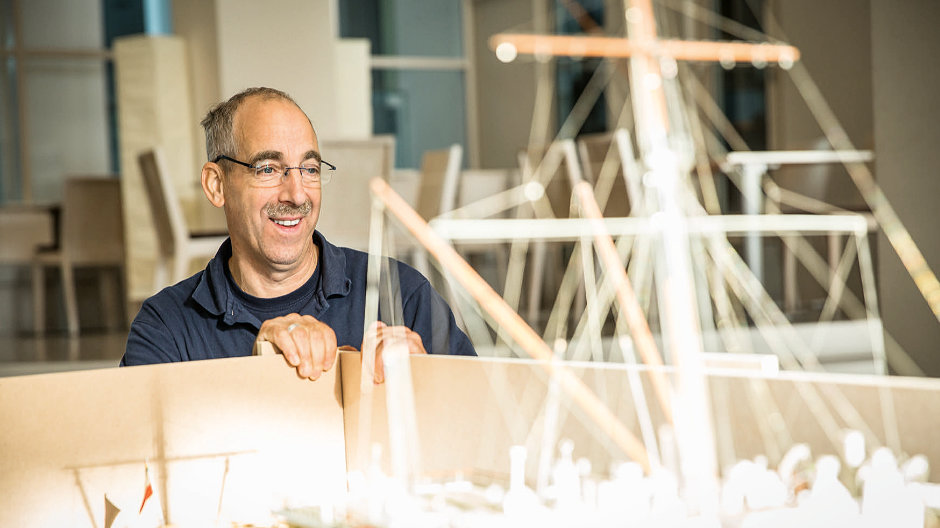
Hasenkamp has grown considerably since it was founded in 1903. And it is still family-owned. At present the company is headed by Hans-Ewald Schneider. His son Thomas is the fifth generation to work in the company. Thomas Schneider learned about art from the cradle; and has probably been as close to it as no other. “When I was a youth I was allowed to help transport the Terracotta Army in Xian,” he reminisces. Thomas Schneider helped out, working in the family company from a very young age. “I have seen some absolutely fascinating transport operations; from the artefacts, thousands of years old, discovered in old sunken cities close to Alexandria to the Bernward Column in Hildesheim cathedral,” he tells us. You then get a feel for the immeasurable value of art very early on. And the family passes these values on to their staff. Of the 250 in Cologne – worldwide they number more than 1000 – 70 of them are drivers. “And every one of them is specially trained as an art technician,” says Schneider. “In our company all the drivers are instructed in how to pack and transport valuable goods and their awareness of the subject of art heightened.”
At the place where it’s all happening, six of these transport specialists greet those responsible at the museum and get straight down to work. Consultation around the “Bremen IV”. The men are wearing dark blue pullovers and white velvet gloves, which makes them look a bit like butlers. And they are just as circumspect. Very carefully the ship is made ready for transportation and secured with tensioning straps.
First station: the ground floor. Here the wooden crate awaits them. Before reaching the crate the carriers must get down 60 steps and a narrow stairwell. When they lift the ship, they take a long deep breath. Anton Sindilj estimates it to be “around 150 to 200 kilos”. His plan to bring six people was spot on. Step for step the model approaches the protective crate. Brief instructions echo through the museum: “Stop! Back! Put it down!“ Anyone who has ever helped a removal knows that words like that don't always achieve the desired effect. But that is not the case with the men from Hasenkamp. The ship lands safely in its wooden haven. Once in there, it is given an additional cover made of cushions, bubble wrap, and buckles.
Loading into the Atego is no problem either. And just like its big sister, the “Bremen IV” sets off on its maiden voyage. At its destination everything takes place in reverse order: hefting the kilos, groaning, a break, setting it down repeatedly. “With the crate, the construction weighs 100 kilogrammes more” Sindilj puffs. One of the men jokes: “Thank God I have already eaten a schnitzel today.”
The journey is over after just under four hours. The ship’s model is standing safely in its new place in the Focke museum. On the portside the lettering “Bremen IV” glitters in the warm sunlight that is shining through the window. The filigree mast stands as before. The golden threads that imitate the ship’s ropes rest undamaged in situ. The six men smile at each other in satisfaction. Yet again Hasenkamp has remained true to its highest credo. “The best thing that can happen to art: nothing!”
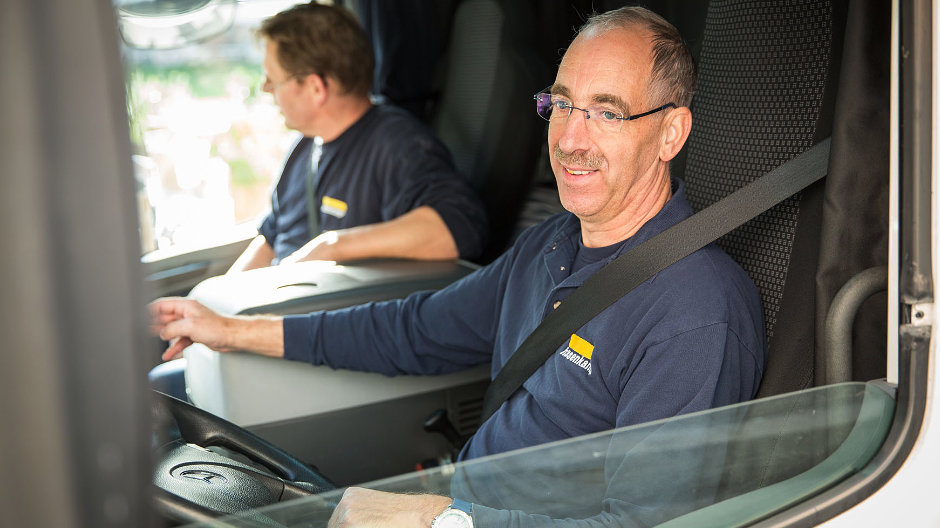
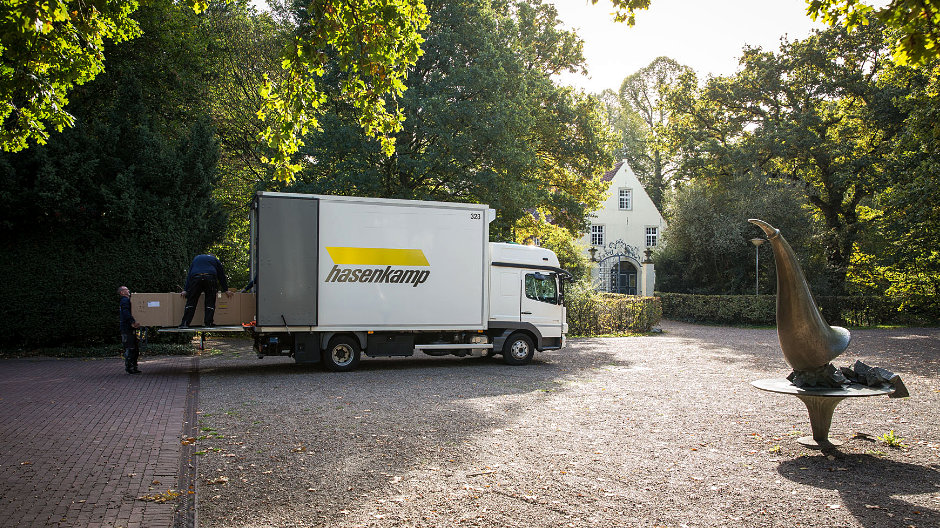
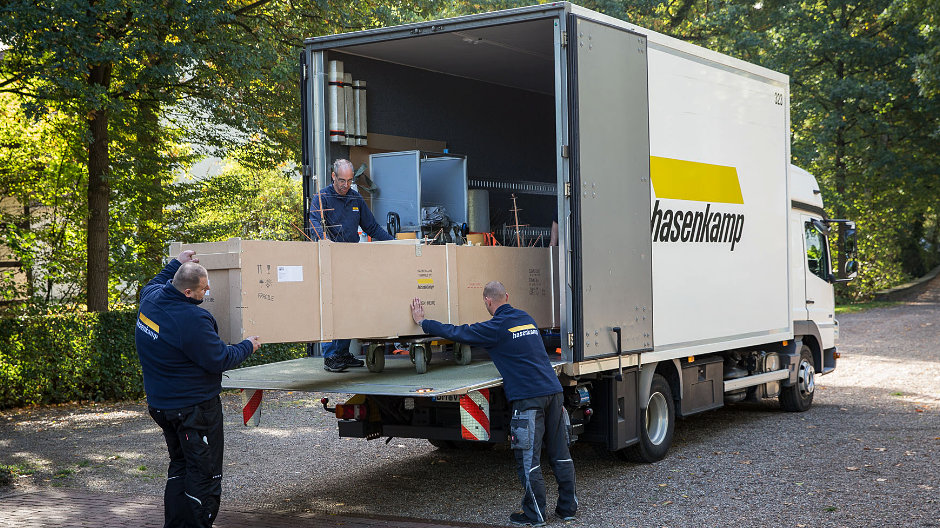
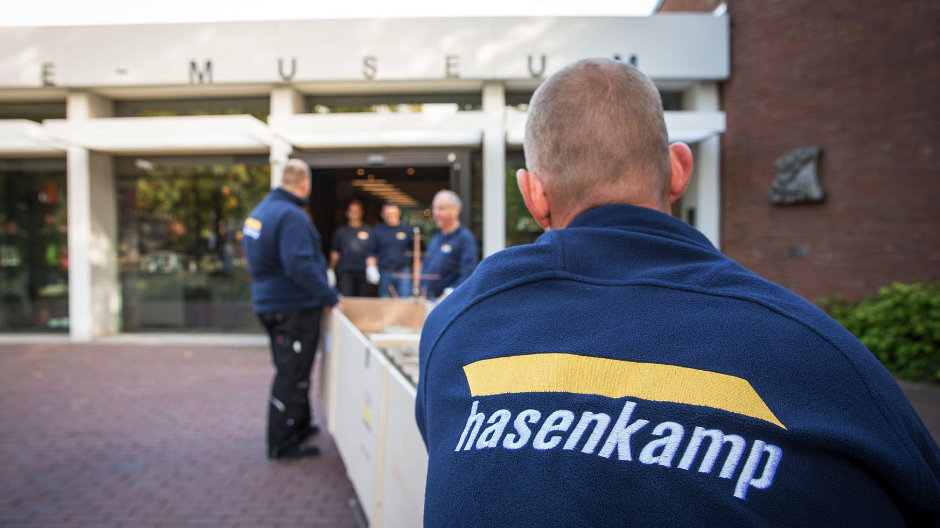
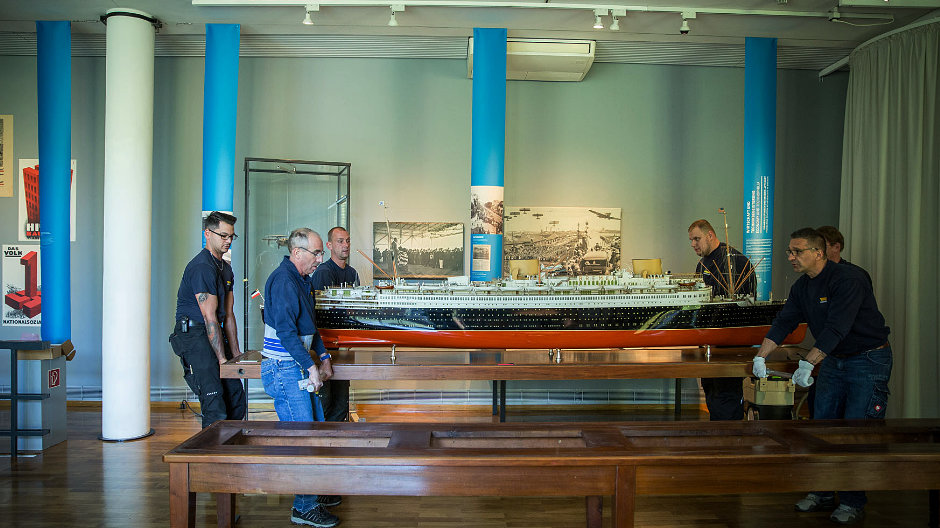
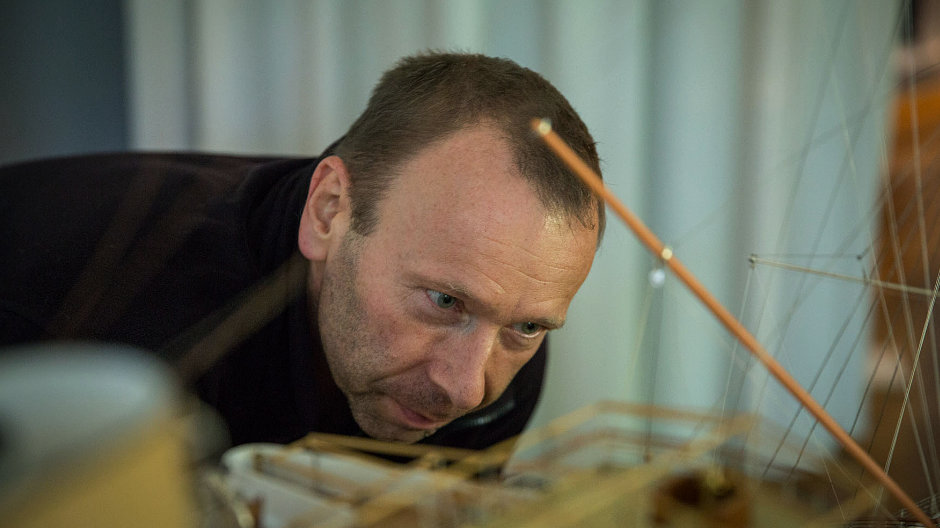
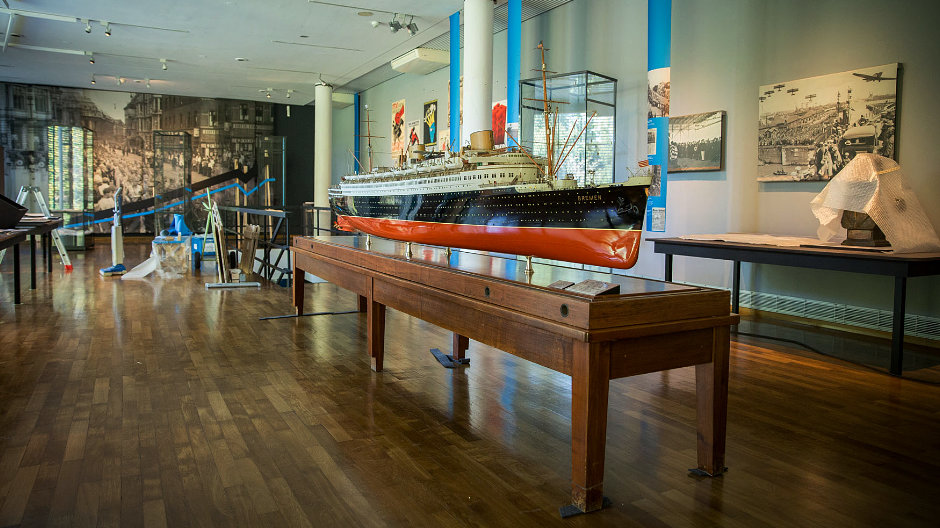
Photos: Sebastian Vollmert




Comment
Please log in to post a comment.
9 comments